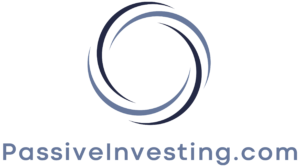Today, Joe Fairless is sharing the seven metrics you should be tracking while raising money for a fund. He discusses the biggest challenge of funds, his best advice from what he’s learned, how often to review metrics, and the one tool you need to maximize your efforts.
Click here to know more about our sponsors:
TRANSCRIPTION
Joe Fairless: Best Ever listeners, how are you doing? I wanted to help you out with raising money for a fund should you be doing that now or if you’re interested in doing that in the future, and specifically the “Seven Metrics to Track When Raising Money for A Fund.”
Now, the challenge is, when you do a fund, that you announce the fund, and you send it out to your current database, and then they decide, “I am going to invest” or, “I’m not going to invest,” and then that’s it. There’s your current database; and they have decided either they are or are not going to invest, or perhaps they’ll just sit with it for a little bit, but then that’s your database. You’ve already sent it out.
So the challenge with the fund is that, well, you have to continue to have leads coming in, in order to continue to grow the amount of dollars that you have in the fund. Because you can’t keep sending the same people emails about the same fund, right? You need to continue to attract more investors. So, that’s where the marketing comes into place, and today, we’re going to talk about the “7 Metrics to Track When Raising Money for A Fund.” And that’s why, because we’ve got to be good at attracting new investors.
So, I’m sharing this with you, because – here’s stuff that I’ve learned after launching a fund and I thought it’d be good for you to have a blueprint that I didn’t have, and it will make things a lot easier and smoother for you when you launch one, or if you’re in the middle of one.
Before I talk about the seven metrics to track, it’s necessary to mention that you’ve got to have a CRM. You’ve got to have a HubSpot, or ActiveCampaign, or whatever you want to use. You’ve got to not only have it and use it, but also have an expert on your team who knows how to track and how to set up the CRM, and how to make sense of it and how to maximize its capabilities; because if you don’t have that, if you have the CRM but you don’t have an expert, then you’re only scratching the surface number one; and number two, you’re probably not getting the most accurate information in order to make business decisions. So get a CRM and then have an expert who is working on your team’s behalf to track it.
Joe Fairless: The other thing I’ll mention is that there’s a distinction between qualified investors, or at least I suggest you make a distinction between qualified investors and investors who have funded, because you can have a lead source that you advertise with, or that maybe you go speak at an event and you get 300 leads, but then you’ve got to track to see how many of the leads actually convert to people who are funding, and if none of the 300 fund – well, then that’s not a good lead source, as individuals weren’t the right audience. So you always have to have the qualified lead metrics versus the funded lead metrics, and make that distinction between the two.
So with that being said, let’s get into the seven metrics to track when raising money for a fund. Well, the first is total spent. You need to know, clearly, how much money that you’re investing into attracting new investors.
So first is total amount of spend that you have spent to date for attracting new investors.
The second metric to track when raising money for a fund is total qualified leads. So total amount of leads who are qualified. By qualified – are they accredited investors? Do they file US tax returns? Perhaps you want to qualify them from an investment amount potential; that’s your call… But total qualified leads – how many total qualified leads are you attracting? So, that’s the second metric.
The third is the qualified lead cost per acquisition. So, the qualified lead CPA. You’ll want to know, okay, of the total amount of dollars spent, how many leads am I getting in? And what does that equal from a per person standpoint? How much does it cost me to attract one qualified lead? That’s likely going to be in the low hundreds, and then the funded lead CPA—here’s where it gets really interesting, and that is tracking the cost per acquisition of each lead that you bring in, who funds. That would simply be the total amount of spend divided by the number of leads who actually fund, and there’s your cost per acquisition, and that should be in probably the low thousands.
The average funded amount, that is the fifth metric to track; the average funded amount will show you how much each lead is funding, but then what it doesn’t tell you is the next metric to track, number seven, the average first-time funder amount. You’ve got your returning investors, plus your new investors; that would be the average funded amount, but then, the sixth metric to track is the average first-time funder amount, because that tells you all the new investors, how much are they investing on average each time. And from my experience, the average funded amount will be higher than the average first-time funder amount. It makes sense, right? The people who have been investing with you for a while, which would be in the average funded amount, they are going to be investing more. And then the average first-time funder amount – hey, they’re just getting to know you, and they’d like to invest a little bit less. What I’ve seen is it’s about a $40,000 difference from the average funded amount to the average first-time funded amount; but that certainly could vary depending on what your minimums are with your offerings.
Joe Fairless: The seventh metric to track – if you forget this one, then you’re in trouble. This is the percent of qualified leads who fund. Because it could be great that you’re getting a lot of qualified leads coming in, but if you’re not converting them to people who actually fund, then who cares? It doesn’t matter if you get a lot of qualified leads; it matters the percent of qualified leads who actually fund. So you’ll want to track that percentage. By the way, from a tracking standpoint, ideally it’s real-time at minimum. You should review these metrics every two weeks whenever you’re launching a fund.
So to recap, the seven metrics to track when raising money for a fund – one, the total amount of spend; two, total qualified leads; three, qualified leads cost per acquisition; four, funded lead cost per acquisition; five, average funded amount; six is average first-time funder amount, so how much the first-time investors are investing… And then seventh, the percent of qualified leads who fund.
So those are the seven metrics. I hope this was valuable. It gives you a blueprint for how you should set up your tracking from a marketing standpoint. And this doesn’t get into the nuances of both attracting new investors and also converting the new investors, which we can talk about on another day, because there’s a whole lot to talk about for how to attract new investors and how to then convert the qualified leads into people who actually fund. But with that, I will take off. I hope you have a best ever day, and talk to you again soon.
Website disclaimer
This website, including the podcasts and other content herein, are made available by Joesta PF LLC solely for informational purposes. The information, statements, comments, views and opinions expressed in this website do not constitute and should not be construed as an offer to buy or sell any securities or to make or consider any investment or course of action. Neither Joe Fairless nor Joesta PF LLC are providing or undertaking to provide any financial, economic, legal, accounting, tax or other advice in or by virtue of this website. The information, statements, comments, views and opinions provided in this website are general in nature, and such information, statements, comments, views and opinions are not intended to be and should not be construed as the provision of investment advice by Joe Fairless or Joesta PF LLC to that listener or generally, and do not result in any listener being considered a client or customer of Joe Fairless or Joesta PF LLC.
The information, statements, comments, views, and opinions expressed or provided in this website (including by speakers who are not officers, employees, or agents of Joe Fairless or Joesta PF LLC) are not necessarily those of Joe Fairless or Joesta PF LLC, and may not be current. Neither Joe Fairless nor Joesta PF LLC make any representation or warranty as to the accuracy or completeness of any of the information, statements, comments, views or opinions contained in this website, and any liability therefor (including in respect of direct, indirect or consequential loss or damage of any kind whatsoever) is expressly disclaimed. Neither Joe Fairless nor Joesta PF LLC undertake any obligation whatsoever to provide any form of update, amendment, change or correction to any of the information, statements, comments, views or opinions set forth in this podcast.
No part of this podcast may, without Joesta PF LLC’s prior written consent, be reproduced, redistributed, published, copied or duplicated in any form, by any means.
Joe Fairless serves as director of investor relations with Ashcroft Capital, a real estate investment firm. Ashcroft Capital is not affiliated with Joesta PF LLC or this website, and is not responsible for any of the content herein.
Oral Disclaimer
The views and opinions expressed in this podcast are provided for informational purposes only, and should not be construed as an offer to buy or sell any securities or to make or consider any investment or course of action. For more information, go to www.bestevershow.com.






